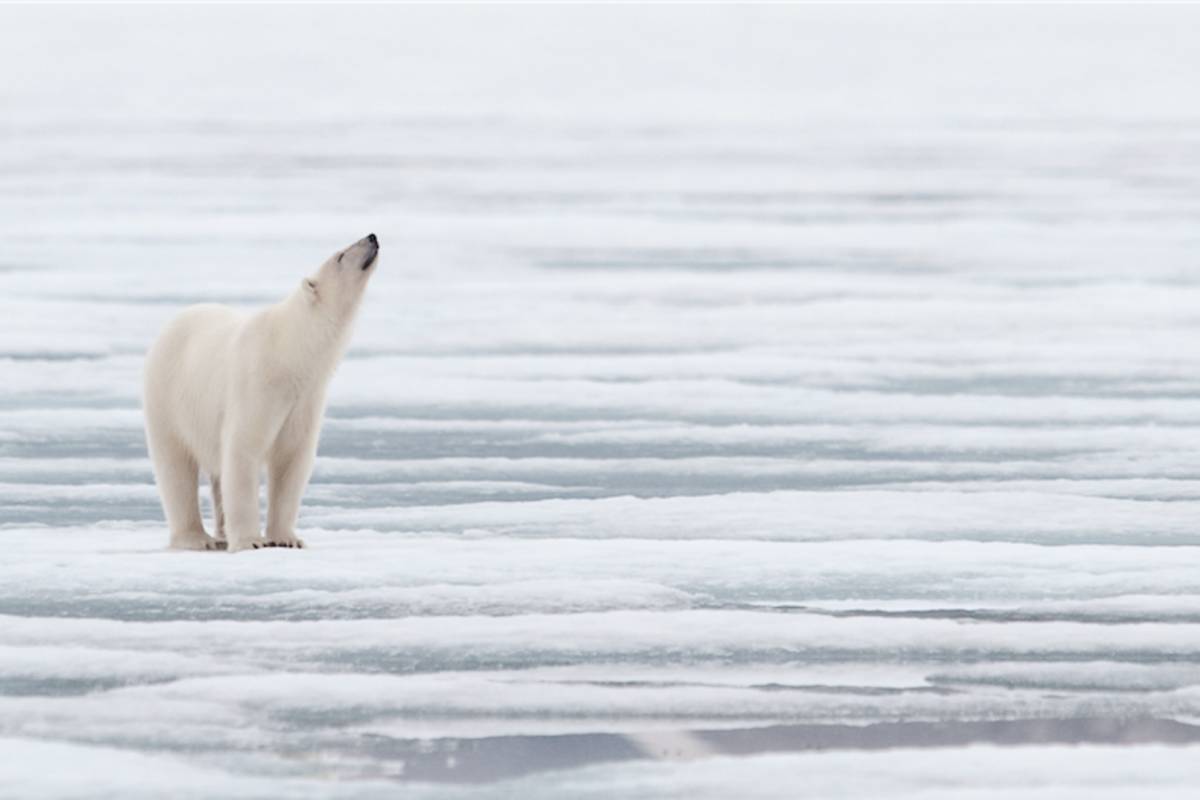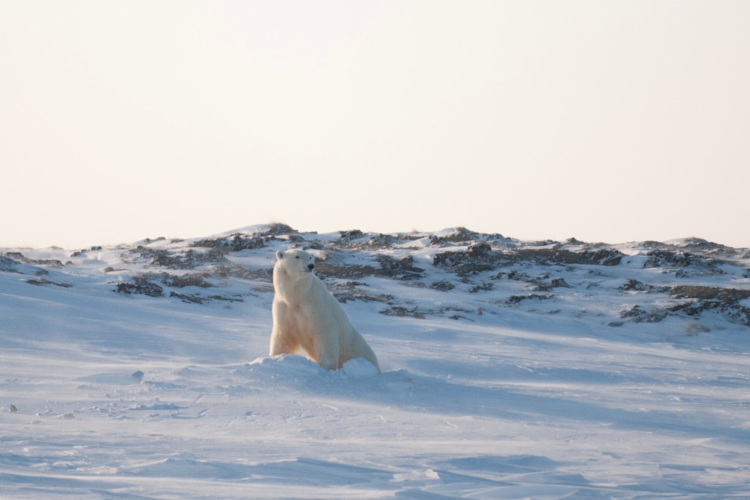Last month, more than 50 polar bears converged on the village of Belushya Guba in the Russian archipelago of Novaya Zemlya—pawing through garbage, roaming down streets, and breaking into homes and businesses.
The tense, potentially dangerous situation lasted for nine days, until patrols were able to drive the bears away, an event that coincided with just enough late-forming ice to support the bears.
But why did so many polar bears gather in the town in the first place?
Geoff York, our senior director of conservation, cites two reasons: a very late freeze-up, with weak ice formation, and the lure of an open dump.
“Polar bears should be out on the ice hunting seals in February,” York said. “But good ice didn’t form on the western side of the archipelago this winter, forcing an unusual number of polar bears ashore. It’s not surprising that many of these bears were attracted to the town’s garbage dump in search of food.”
As the sea ice melts and more polar bears spend more time onshore for longer periods, scientists expect such encounters to increase. Already, some coastal communities in Canada have seen increased numbers of polar bears, as have towns in Greenland, Alaska, and Russia.
“It’s a sign of the times,” York said. “Polar bears generally avoid people, but they have a keen sense of smell and, when hungry, will overcome their natural instinct to stay away. An open garbage dump is an easy food source that serves as a powerful attractant.”
As an active member and past chair of the Polar Bear Range States Conflict Working Group, York is intimately involved with efforts to reduce potentially dangerous encounters between polar bears and people, a growing problem in a warming Arctic.
In the case of the Russian bears, authorities erected fences to protect school children and brought in staff from the Russian Arctic Park to block access to the dump and drive the bears away. Plans are also in the works to close the open dump and work to mitigate future conflict.
How Polar Bears International Helps
Education and outreach. PBI works to help keep people and polar bears safe, with outreach on best practices for avoiding attacks. These include eliminating rewards such as open garbage dumps, installing bear-proof garbage cans, and adding additional lighting. Other measures include being prepared with deterrents such as bear spray, signal flares, or other noise-makers.
Research. PBI is studying the effectiveness of using surveillance radar to detect approaching polar bears, with alerts warning northern communities before a bear enters town. The radar works even in whiteout snowstorm conditions and at night. PBI also helped with research on the best deterrents and with compiling a history of polar bear attacks, including their causes, with a goal of mitigating or avoiding future conflict.
World Ranger Day Award. Polar bear patrols work on the front lines in their communities to help prevent negative encounters. Our annual World Ranger Day Award recognizes the dedication and courage of these officers. Past recipients include Vladelin Kavry of the Umky Patrol in Chukotka, Russia; the Polar Bear Alert team in Churchill, Canada; and Erling Madsen of Ittoqqortoormiit, Greenland.

















